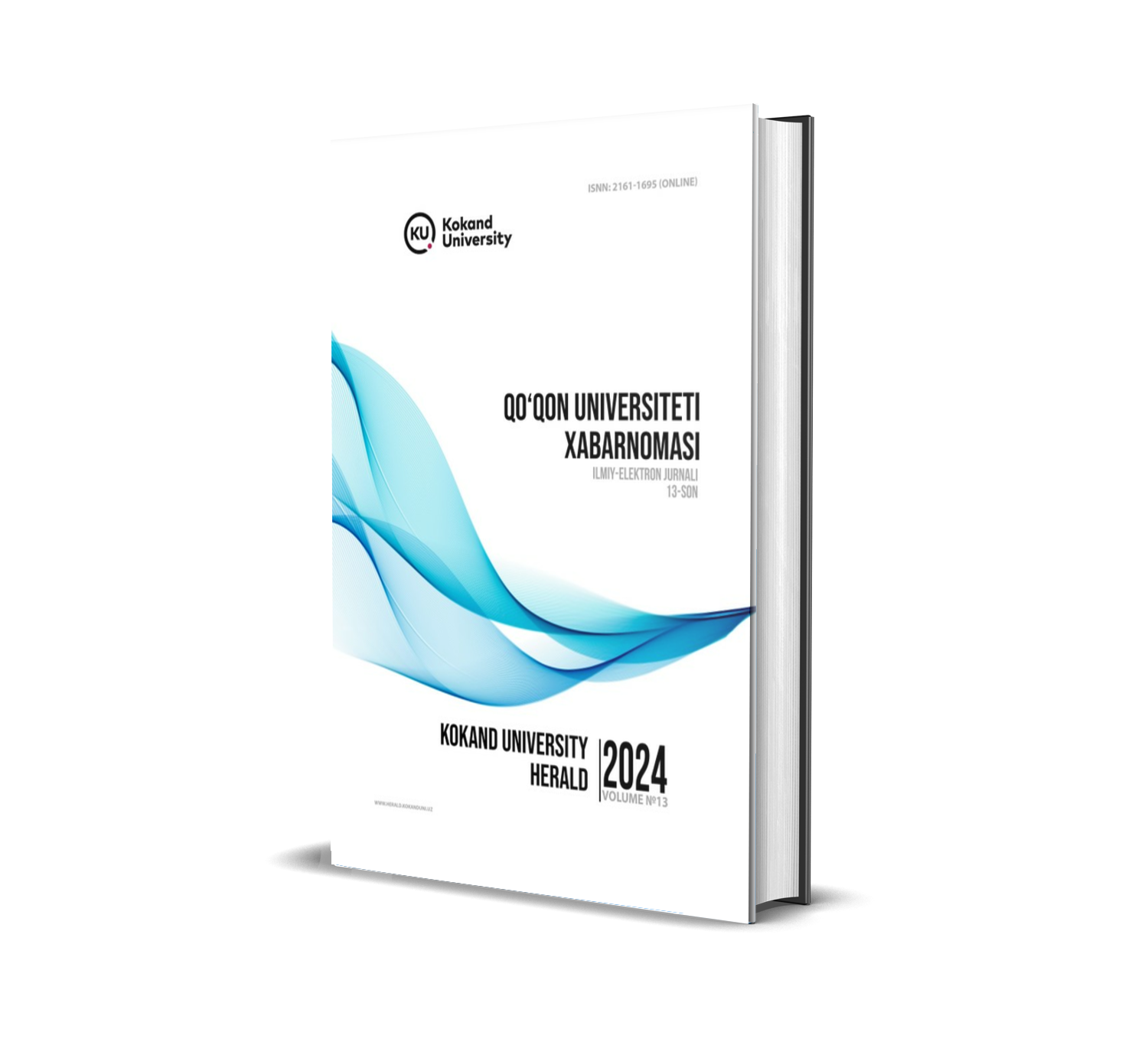BEYOND WORDS: THE ROLE OF PARALINGUISTICS IN EFFECTIVE COMMUNICATION
DOI:
https://doi.org/10.54613/ku.v13i.1083Keywords:
Paralinguistics, Effective Communication, Rate of Speech, Cross-Cultural Communication, Emotional Expression, Non-verbal Communication, Vocal Cues.Abstract
Effective communication goes beyond just the words spoken; it involves various non-verbal elements, among which paralinguistics plays a critical role. Paralinguistics refers to the vocal elements accompanying speech that convey emotional nuance and intention, such as tone, pitch, rate of speech, volume, and pauses. This study investigates the impact of paralinguistic features on communication, highlighting how these vocal cues influence the emotional tone, clarity, and overall message reception. Utilizing both qualitative and quantitative research methods, the study explores cultural variations in the interpretation of these cues and their importance in cross-cultural communication. The findings emphasize that paralinguistic cues, when interpreted correctly, can enhance understanding and reduce the potential for miscommunication, particularly in globalized and multicultural settings.
Foydalanilgan adabiyotlar:
Austin, J. L. (1962). How to do things with words. Harvard University Press
Burgoon, J. K., Guerrero, L. K., & Floyd, K. (2016). Nonverbal Communication (2nd ed.). Pearson Education.
Müller, C. (2018). Paralinguistics: A comprehensive overview. Springer
Niven, K. (2016). Emotions and their interpretation in communication. Wiley.
Schroeder, S., & Eder, A. B. (2015). Speech, language, and emotion: Paralinguistics in communication. Springer.
Scherer, K. R. (2003). Vocal communication of emotion: A review of research paradigms. Speech Communication, 40(1-2), 227-256
www.dissercat.ru
www.etimology.eng
Mamurova Shaxlo. (2024). IBORA, SO’Z BIRIKMASI VA FRAZEOLOGIK BIRLIKLAR HAQIDA UMUMIY TUCHUNCHA. Kokand University Research Base, 180–185. Retrieved from https://scholar.kokanduni.uz/index.php/rb/article/view/308
Mamurova, S. (2023). LINGUOCULTURAL ANALYSIS OF PHRASES WITH ADJECTIVE COMPONENTS IN ENGLISH AND UZBEK. Interpretation and Researches, 1(1). извлечено от https://interpretationandresearches.uz/index.php/iar/article/view/297
Surayyo Abidjanova. (2024). EFFECTIVENESS OF USING AUTHENTIC MATERIALS IN THE CLASSROOM. Kokand University Research Base, 34–38. Retrieved from https://scholar.kokanduni.uz/index.php/rb/article/view/284
Surayyo Abidjanova. (2024). USING READING STRATEGIES IN ELEMENTARY LEVEL CLASROOMS. Kokand University Research Base, 30–33. Retrieved from https://scholar.kokanduni.uz/index.php/rb/article/view/283
Bektashev, O. K., & Mamurova, S. S. (2023). Grammatical Form And Its Types In The Formation Of Word Combinations. Journal of Advanced Zoology, 44, 1211-1215.
Sharafutdinov Nodir Sultanovich. (2024). HISTORY OF LINGUOPRAGMATICS STUDY. Kokand University Research Base, 9–15. Retrieved from https://scholar.kokanduni.uz/index.php/rb/article/view/279
Sharafutdinov Nodir Sultanovich. (2024). STAGES OF LEARNING LINGUOPRAGMATICS. Kokand University Research Base, 239–245. Retrieved from https://scholar.kokanduni.uz/index.php/rb/article/view/321
Elvina Rustemovna Sherefetdinova. (2024). IN INTERCULTURAL CONTEXTS, SOCIAL NORMS, BELIEFS, AND VALUES PLAY A SIGNIFICANT ROLE IN SHAPING INTERPRETATIONS AND INTERACTIONS. Kokand University Research Base, 112–123. Retrieved from https://scholar.kokanduni.uz/index.php/rb/article/view/297
Elvina Rustemovna Sherefetdinova. (2024). GLOBALIZATION AND THE SHIFTING SANDS OF CULTURAL IDENTITY. Kokand University Research Base, 124–127. Retrieved from https://scholar.kokanduni.uz/index.php/rb/article/view/298
Rakhmanova, N. (2023). LANGUAGE AND CULTURE: INVESTIGATE THE CONNECTION AMONG LANGUAGE AND CULTURE, ANALYZING HOW LANGUAGE REFLECTS AND SHAPES SOCIAL STANDARDS, VALUES, AND PERSONALITIES. Talqin Va Tadqiqotlar, 1(31). извлечено от https://talqinvatadqiqotlar.uz/index.php/tvt/article/view/1291
Rakhmonova Nilufar Bakhodirovna. (2024). About Some Features of Authentic Text Materials in Teaching a Foreign Language. Central Asian Journal of Literature, Philosophy and Culture, 5(1), 45-49. Retrieved from https://cajlpc.centralasianstudies.org/index.php/CAJLPC/article/view/1136
Axmadjonova Mohinur. (2024). PROJECT-BASED LEARNING AS A CREATIVE AND INNOVATIVE WAY OF TEACHING ENGLISH AS A FOREIGN LANGUAGE. Kokand University Research Base, 54–60. Retrieved from https://scholar.kokanduni.uz/index.php/rb/article/view/287
Mukhtorova, M., & Ilxomov, X. (2024). HOW TO IMPROVE LISTENING SKILLS OF BOTH ESL AND EFL STUDENTS. QO ‘QON UNIVERSITETI XABARNOMASI, 11, 84-86.
Mamurova Shakhlo Sultanovna IMAGERY AS A LINGUISTIC TOOL: ANALYSIS OF METAPHORS, SIMILES, AND SYMBOLISM ACROSS LANGUAGES // Talqin va tadqiqotlar ilmiy-uslubiy jurnali. 2024. №56. URL: https://cyberleninka.ru/article/n/imagery-as-a-linguistic-tool-analysis-of-metaphors-similes-and-symbolism-across-languages
Mamurova Shakhlo Sultanovna THE ROLE OF IMAGERY IN LINGUISTIC EXPRESSION: COGNITIVE AND CULTURAL PERSPECTIVES // Talqin va tadqiqotlar ilmiy-uslubiy jurnali. 2024. №56. URL: https://cyberleninka.ru/article/n/the-role-of-imagery-in-linguistic-expression-cognitive-and-cultural-perspectives
Downloads
Published
Iqtiboslik olish
Issue
Section
License
Copyright (c) 2025 QO‘QON UNIVERSITETI XABARNOMASI

This work is licensed under a Creative Commons Attribution 4.0 International License.

